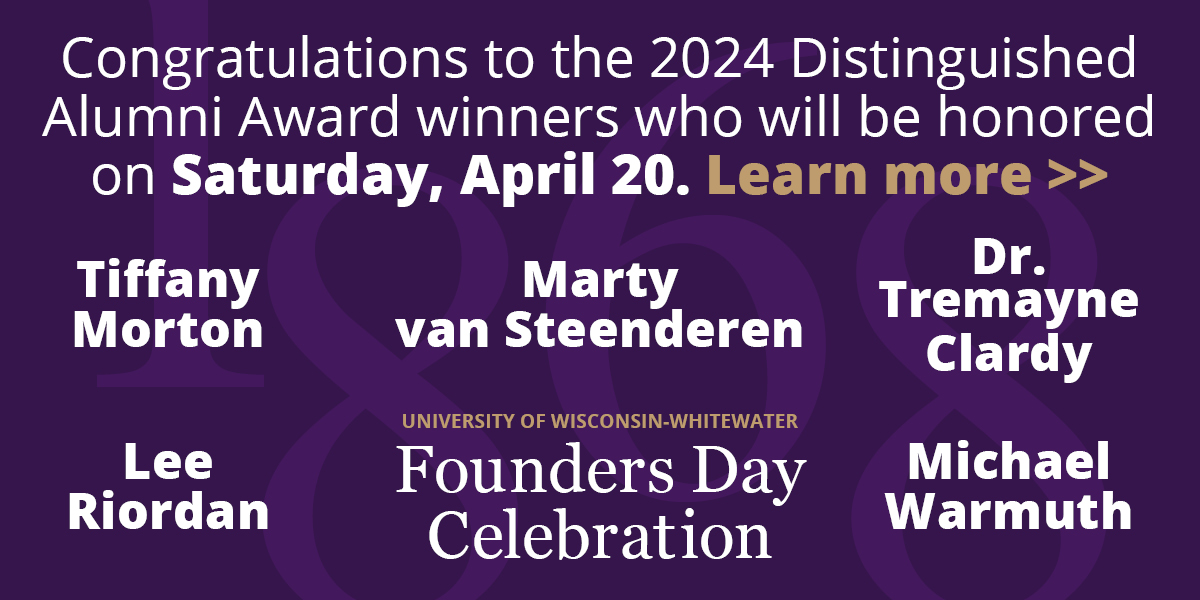Although UW-Whitewater’s graduation rate has gradually increased since 1990, it still is 5.1 percent below the average five-year graduation rate of the entire UW System.
The 2003 UW-Whitewater freshman class graduated at a rate of 25.2 percent after four years, 49 percent after five years, and 55.7 percent after six years, compared to 26.4 percent, 54.5 percent and 62.7 percent for the UW System, respectfully.

However, just because the numbers for UW-Whitewater are lower than those of the UW System, Chancellor Richard Telfer was encouraged by the recent trend in rates.
“The rate this last year is the highest it has ever been,” Telfer said. “So, it’s not like we’re having issues.”
Telfer attributed the higher rate for the UW System to the large amount of students at UW-Madison. He said since UW-Madison’s six-year graduation rate for the 2003 freshman class was 81 percent, the entire UW System’s numbers would be skewed a little bit higher.
Graduation rates for minorities at UW-Whitewater are lower than the UW System as well. Only 10.9 percent of minorities who were freshmen in 2003 graduated from UW-Whitewater after four years, while 11.4 percent graduated throughout the UW System.
Minorities make up about 13 percent of students, up two percent since 2005.
After five years, UW-Whitewater minorities graduated at a 34.5 percent clip, whereas UW System minorities graduated at a 37.7 percent rate. After six years, 40 percent of minorities graduated at UW-Whitewater with 43.6 percent graduating system-wide.
Though only a quarter of UW-Whitewater students graduate after four years and less than half after five years, the graduation rate has steadily increased since the early ’90s. Telfer attributed the increase to several things.
“I think a substantial number of things that we do on campus are focused on helping to get more of our students to graduate,” Telfer said. “[Learning communities] seem to have a positive relationship with improving graduation rates. [New student seminars] help also to improve graduation rates.”
According to the UW-Whitewater Accountability Report, the number of students in fall learning communities has drastically increased since 2004, when only 38 students were participating in them. In fall 2010, 411 students participated in a learning community – an increase of 10.8 times the original number.
The Accountability Report also states only 311 students were enrolled in the New Student Seminar class in 2001, whereas 1,621 students enrolled in fall 2010.
During the 2009-2010 school year, a total of 2,214 degrees were conferred at UW-Whitewater, which was a 5.7 percent increase over five years earlier, the Accountability Report said.
Retention Rates
UW-Whitewater is not only below the UW System average in graduation rates but in retention rates as well.
The retention rate for the 2003 freshman class at UW-Whitewater was 76.8 percent in their second year, compared to 83.8 percent for the entire system. The third-year retention rate for UW-Whitewater was 68.1 percent, which was nine percent lower than that of the UW System.
Telfer said students may transfer in and out of UW-Whitewater for many reasons.
“Some [may transfer] because they decide they don’t want the academic program that they have here,” Telfer said. “Some because we have the academic program here.”
About six to seven percent of students who start at UW-Whitewater graduate at a different UW System school, Telfer said. All UW System schools hover around that same number, he added.
Telfer said there is not much the university can do about keeping students at UW-Whitewater.
“If [students] don’t like it here, they may or may not tell us they’re leaving for that reason,” Telfer said. “They’re under no obligation to tell us why they’re leaving. Some leave because they want to be closer to home [and] some leave because they want to be farther from home.”
Some students may be forced to leave, Telfer admitted.
“I think there is probably a different story for every single person,” Telfer said.
Telfer said the university has attempted to send out surveys to students that would inform the university why they left. But since students are under no requirement to respond or even provide an address to send the survey to, it was hard to gauge students’ opinions.
The Accountability Report states that students who are enrolled in a learning community their first year are retained at a higher rate in their second fall semester. In 2009, students participating in a learning community were retained at an 82 percent rate, whereas only 77 percent who didn’t participate returned the next school year.
New student seminar classes have an even larger influence on retention rates, the Accountability Report said. In 2009, 84 percent of students enrolled in new student seminar returned their second year, while only 58 percent who weren’t enrolled returned.












